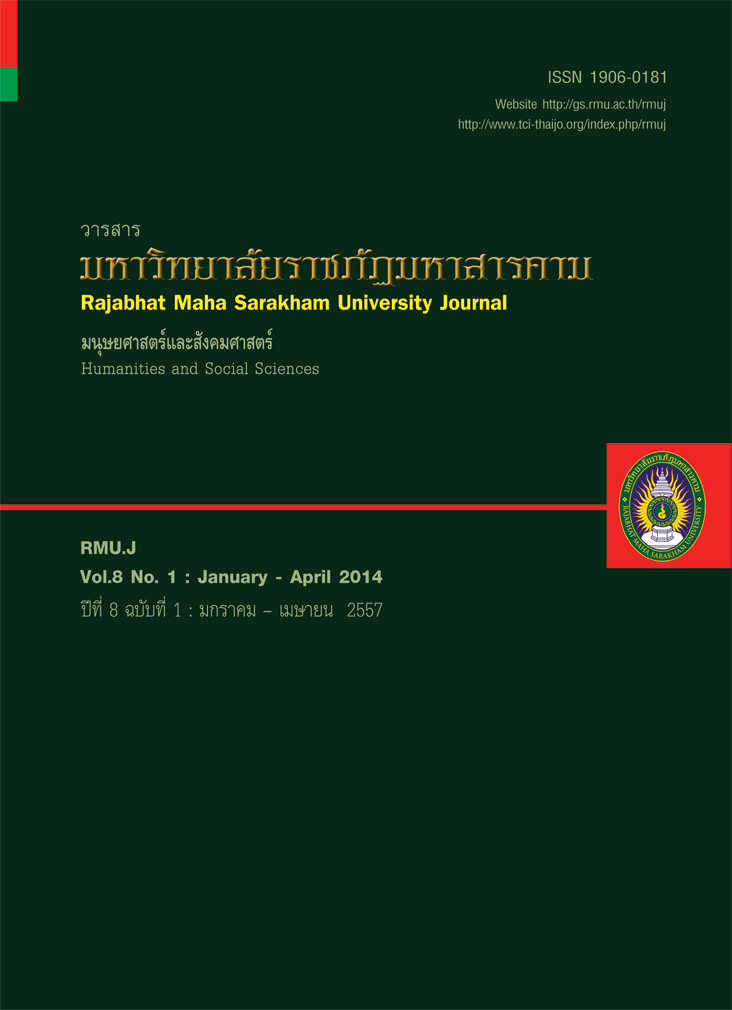ภาพลักษณ์ด้านลบของผู้หญิงในวรรณกรรมโบราณสันสกฤตพากย์ไทย Negative Images of Females as Found in the Ancient Sanskrit Literature in the Thai Episode
Main Article Content
บทคัดย่อ
การศึกษาภาพลักษณ์ด้านลบของผู้หญิงในวรรณกรรมโบราณสันสกฤตพากย์ไทย มีวัตถุประสงค์เพื่อเข้าใจปัญหาสตรี และ
ความไม่เสมอภาคระหว่างเพศของสังคมอินเดียในอดีต จากนิทานซ้อนนิทานสันสกฤต 2 เรื่อง คือ นิทานเวตาล และหิโตปเทศ ด้วยวิธี
การตีความตามแนวคิดสตรีนิยม ผลการวิจัยพบว่า
ทาํ ให้ทราบและเขา้ ใจระบบคดิ และทัศนะเชิงลบตา่ งๆ ของคนในสงั คมอินเดียโบราณ โดยเฉพาะอย่างยิ่งทศั นะของ ผ้ปู ระพันธ์
ชายที่มีต่อหญิงในสังคมเดียวกันกับตน อนึ่งภาพลักษณ์ด้านลบต่างๆ ที่ปรากฏในนิทานซ้อนนิทานทั้งสองเรื่อง อาทิ ผู้หญิงเป็นเพศที่
เชื่อถือไม่ได้ ผู้หญิงเป็นเหตุแห่งทุกข์ ผู้หญิงเป็นสิ่งชั่วร้ายที่สุด ผู้หญิงเป็นเหตุให้ผู้ชายกลายเป็นคนชั่ว ผู้หญิงกระทำแต่ความชั่ว
เป็นต้น มิติแห่งความชั่วร้ายของสตรีอินเดียโบราณเหล่านี้ เป็นการพยายามสร้างภาพลักษณ์ และสัญลักษณ์ทางลบเพื่อครอบงำผู้หญิง
โดยสังคมที่นิยมชาย เป็นมุมมอง ทัศนะ เจตคติเพียงด้านเดียวของผู้ชายอินเดีย เพื่อประโยชน์สำหรับการจำแนกสถานภาพทางสังคม
ระหว่างชายและหญิง เป็นวาทกรรมที่แฝงอคติทางเพศสัญลักษณ์
The purpose of the study was to investigate negative images of females in ancient Sanskrit literature in
the Thai episode: to understand feminine problems and gender inequality in ancient Indian society based on
two-frame tales: Vetala’s tales and Hitopadesa, as interpreted by using the feminist approach. Results of the
study reveal awareness and understanding of thinking processes and negative attitudes of people in ancient
Indian society, especially those of male authors towards their fellow females in the same society. Particularly,
there are various negative images of women found in the two-frame tales such as the following: untrustworthiness,
cause of trouble, the worst evil, cause of men’s becoming evils, having only evil practice, etc. These negative
expressions for ancient female Indians have been seen as attempts by male chauvinists to create negative
images and symbols to dominate ancient Indians women. These are perceived as single-view male attitudes,
for the sake of social status categorization of men and women: only discourse of sexual prejudice.
Article Details
1. บทความที่ลงตีพิมพ์ทุกเรื่องได้รับการตรวจทางวิชาการโดยผู้ประเมินอิสระ ผู้ทรงคุณวุฒิ (Peer Review) สาขาที่เกี่ยวข้อง อย่างน้อย 3 ท่าน ในรูปแบบ Double blind review
2. ข้อคิดเห็นใด ๆ ของบทความที่ลงตีพิมพ์ในวารสารมหาวิทยาลัยราชภัฏมหาสารคาม นี้เป็นของผู้เขียน คณะผู้จัดทำวารสารไม่จำเป็นต้องเห็นด้วย
3. กองบรรณาธิการวารสารมหาวิทยาลัยราชภัฏมหาสารคาม ไม่สงวนสิทธิ์การคัดลอกแต่ให้อ้างอิงแสดงที่มา


